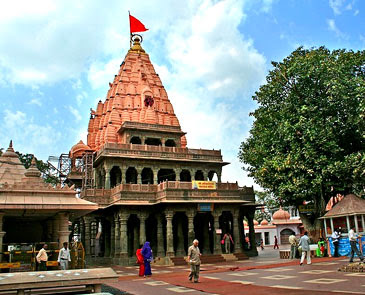 |
| Pushkar |
Pushkar is a town which lies in the Ajmer district of Rajasthan. It's pilgrimage site is one of the holiest in India. It is a mellow town by the great lake of Pushkar amidst the perfume of jasmine and rose flowers. The town of Pushkar is also called as "City of Temples". One of the most important Hindu temples in Pushkar is the Brahma Temple. The small quiet town springs to life and buzzing activity every year during the famous Camel Fair that is held usually in the month of October.
The various temples which are located in Pushkar are:-
 |
| Brahma Temple |
Brahma Temple: It is the temple in India that is devoted to the creator of the universe, Brahma. Lord Brahma had performed a religious ritual over here along with other Gods and hence is considered to be a very sacred place. It is said that the beautiful lake at Pushkar was created miraculously when a lotus fell down from the hands of Lord Brahma and fell at Pushkar.
Savitri Temple: This temple is dedicated to Goddess Savitri, the wife of Lord Brahma. The temple is located at the top of a hillock and the views of the surrounding landscape from here are said to be splendid. The temple is reached by a long series of stairs.
Waraha Temple: A famous temple in Pushkar this temple is dedicated to the third incarnation of Lord Vishnu which was in the form of a boar. It is said that Lord Vishnu killed the demon Hiranyaksha, recovered a stolen Veda and saved the earth from drowning in the ocean.
 |
| Rangji Temple |
Rangji Temple: This temple is unique because of its architectural style. It was constructed in the Dravidian style with a typical "Gopuram" (main temple dome) rising at the top. One can also see some influences of Rajput style of architecture.
 |
| A glimpse of Pushkar Mela |
Pushkar Fair: It one of the world's largest livestock and camel fairs held every year. It continues for five days and these five days are a period of relaxation and merry-making for the villagers. Countless people in their colourful attire gather and the whole town comes alive with vibrant folk music, camel races and various traditional entertainment competitions. Animals, including over 50,000 camels, are brought from miles around to be traded and sold. Special stalls are set up selling finery and jewellery for the camels. Camels wear jewellery of silver and beads. There are silver bells and bangles around their ankles that jangle when they walk.
One can reach Pushkar in following ways:-
By Air: The nearest airport from Pushkar is Sanganer Airport at Jaipur at distance of 146 km .
By Road: Pushkar is connected with Ajmer by Pushkar road which goes through aravalli range. The mountain portion road separates Pushkar from Ajmer City.
By Rail: Pushkar railway station started operations in January 2012 and connects to the nearest railway station Ajmer. Ajmer railway junction is connected to almost all cities of India.











































